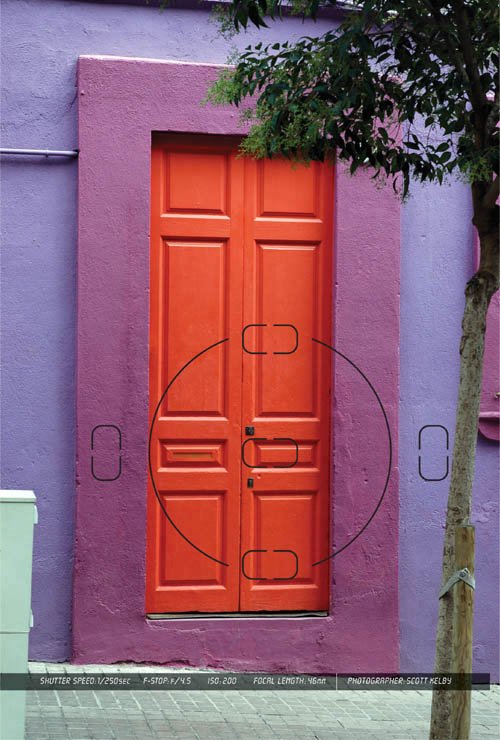There's More to It Than You'd Think 
 You're probably surprised to see a chapter in here about shooting flowers because flowers seem like they'd be easy to shoot, right? I mean, they're just sitting therenot moving. They're colorful. They're already interesting, and people love looking at them. It should be a total no-brainer to get a good flower shot. But ya know what? It's not. It's a brainer. It's a total brainer. Ya know why? It's because of pollination. That's right, it's the pollination that naturally occurs in nature that puts a thin reflective film over flowers that can't normally be seen with the naked eye, but today's sensitive CMOS and CCD digital camera sensors capture this reflectance and it appears as a gray tint over our images. Not only does it turn the photos somewhat gray (which causes flowers to lose much of their vibrant color), you also lose sharpness as well. Now, there is a special photographic filter (called the Flora 61B from PhotoDynamics) that can help reduce the effects of this pollination and both bring back the sharpness and reduce the graying effect, but because of U.S. trade sanctions imposed by the Federal Trade Commission, we can no longer buy this filter direct. Especially because I totally made this whole thing up. I can't believe you fell for this two chapters in a row. Seriously, how are you going to get good flower photos if you're falling for the old Flora 61B trick? Okay, I'm just teasing you, but seriously, getting good flower shots is an art, and if you follow the tips I'm laying out in this chapter, the very next flower shots you take will be that much better (especially if you don't mind the graying and loss of sharpness caused by pollination). See, there I go again. It's a sickness. You're probably surprised to see a chapter in here about shooting flowers because flowers seem like they'd be easy to shoot, right? I mean, they're just sitting therenot moving. They're colorful. They're already interesting, and people love looking at them. It should be a total no-brainer to get a good flower shot. But ya know what? It's not. It's a brainer. It's a total brainer. Ya know why? It's because of pollination. That's right, it's the pollination that naturally occurs in nature that puts a thin reflective film over flowers that can't normally be seen with the naked eye, but today's sensitive CMOS and CCD digital camera sensors capture this reflectance and it appears as a gray tint over our images. Not only does it turn the photos somewhat gray (which causes flowers to lose much of their vibrant color), you also lose sharpness as well. Now, there is a special photographic filter (called the Flora 61B from PhotoDynamics) that can help reduce the effects of this pollination and both bring back the sharpness and reduce the graying effect, but because of U.S. trade sanctions imposed by the Federal Trade Commission, we can no longer buy this filter direct. Especially because I totally made this whole thing up. I can't believe you fell for this two chapters in a row. Seriously, how are you going to get good flower photos if you're falling for the old Flora 61B trick? Okay, I'm just teasing you, but seriously, getting good flower shots is an art, and if you follow the tips I'm laying out in this chapter, the very next flower shots you take will be that much better (especially if you don't mind the graying and loss of sharpness caused by pollination). See, there I go again. It's a sickness. |

